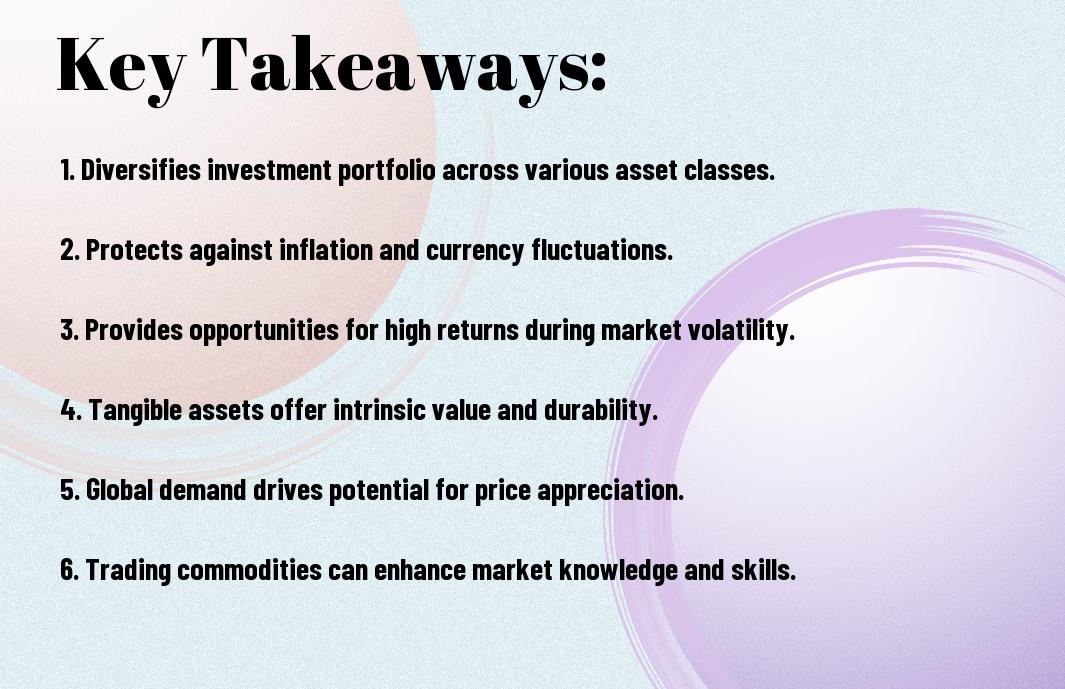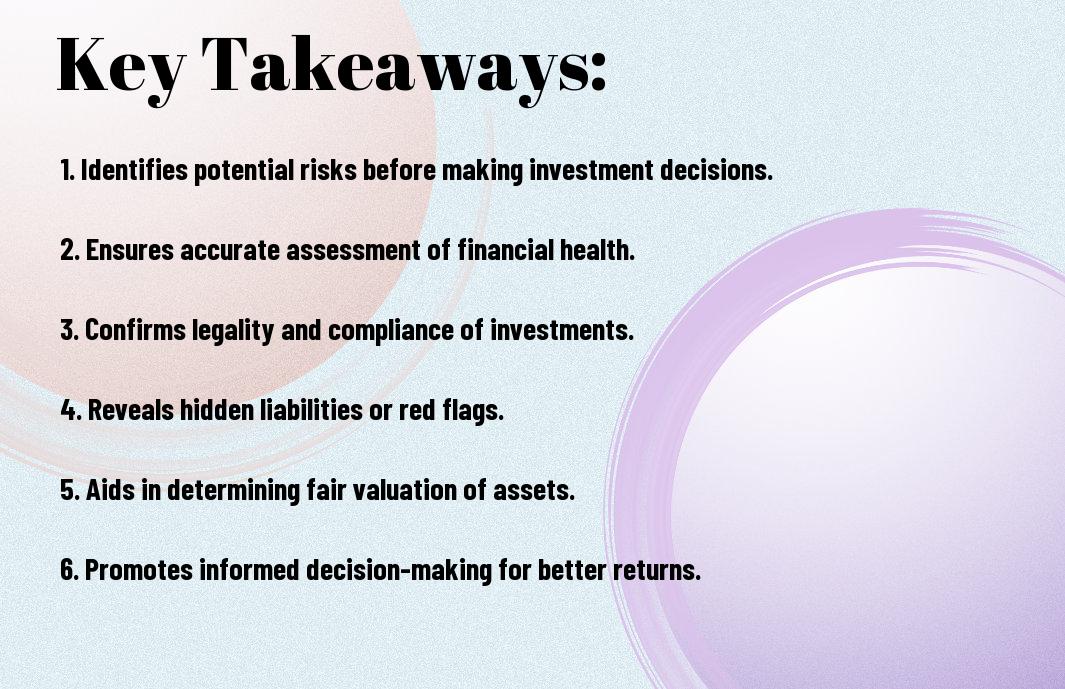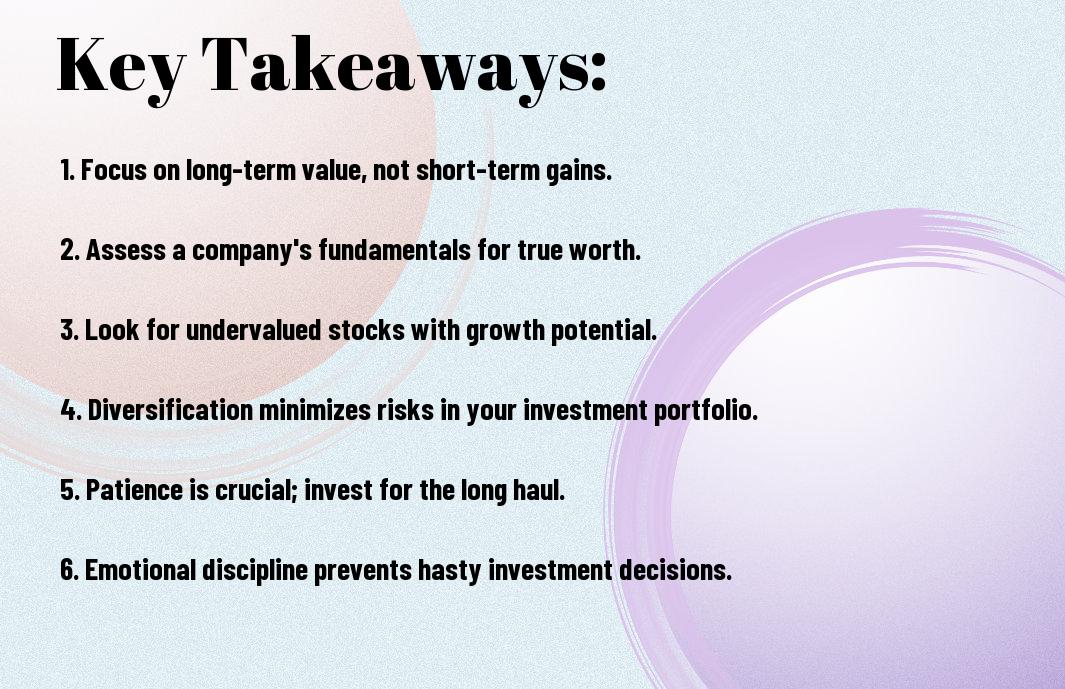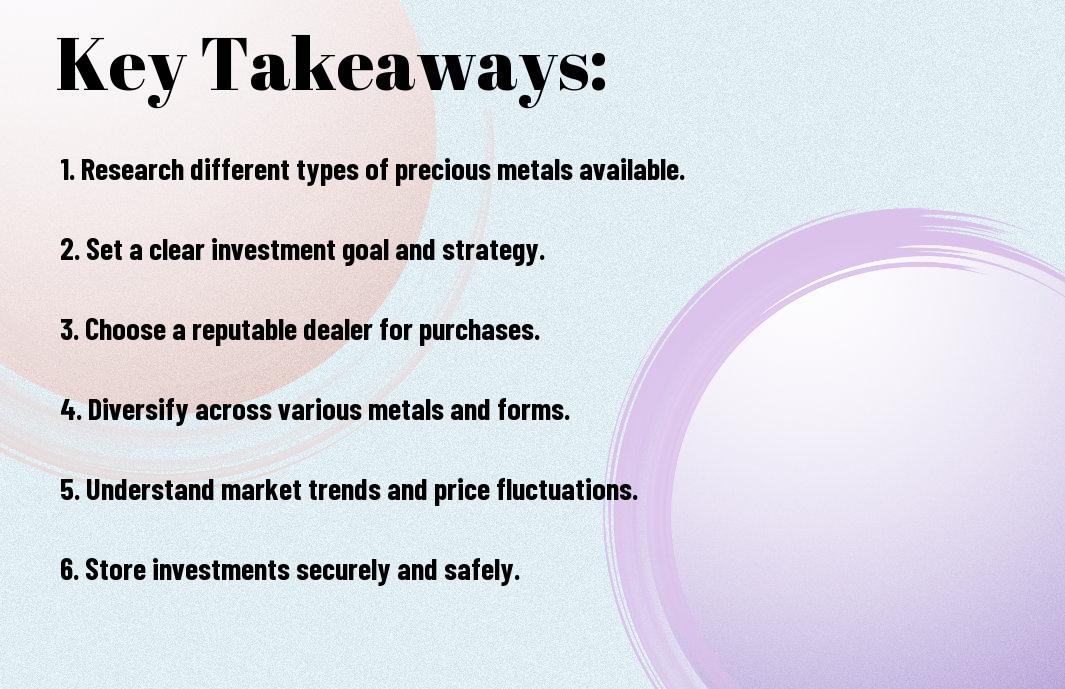Over the years, investing in commodities has emerged as an effective way for you to diversify your portfolio and hedge against inflation. Commodities, such as gold, oil, and agricultural products, not only provide a tangible asset but also allow you to capitalize on market fluctuations. By understanding the unique characteristics of these investments, you can enhance your financial strategy while safeguarding your wealth. This blog post will explore the various benefits of incorporating commodities into your investment approach and guide you through the compelling reasons to consider this asset class.
Key Takeaways:
- Diversification: Investing in commodities can help diversify your portfolio, reducing overall risk by not being solely dependent on stocks and bonds.
- Inflation Hedge: Commodities often act as a hedge against inflation, as their prices may increase when the cost of goods and services rises.
- Global Demand: Many commodities are driven by global demand trends, which can provide opportunities for profit as economies expand or industrial needs grow.
- Physical Assets: Commodities represent tangible assets which can provide a sense of security for investors, as they are not tied to currency fluctuations.
- Market Dynamics: The commodities market is influenced by various factors such as weather conditions and geopolitical events, offering unique trading opportunities.

Understanding Commodities
Before submerging into the benefits of investing in commodities, it’s necessary to grasp what commodities are and how they function in the market. Commodities represent raw materials or primary agricultural products that can be bought and sold, often forming the foundation for various industries. Understanding the different categories of commodities will help you make informed investment decisions.
Definition of Commodities
Any material that can be traded and is used as a input or output in the production of goods or services can be classified as a commodity. This includes tangible assets that are fungible, meaning they are interchangeable with other assets of the same type. Commodities serve as vital components in global economies, influencing market trends and investment opportunities.
Types of Commodities
Understanding the diverse types of commodities is necessary for effective investing. The two main categories are:
- Hard Commodities: Natural resources that are mined or extracted, such as gold, oil, and coal.
- Soft Commodities: Agricultural products that are grown, such as wheat, coffee, and sugar.
After familiarizing yourself with these categories, you’ll be better equipped to explore their respective markets.
For a clearer understanding, take a look at the following table outlining different types of commodities:
| Type | Examples |
| Hard Commodities | Gold, Oil, Silver |
| Soft Commodities | Cotton, Coffee, Cocoa |
| Agricultural Commodities | Wheat, Corn, Soybeans |
| Livestock Commodities | Cattle, Hogs, Poultry |
| Energy Commodities | Natural Gas, Crude Oil, Ethanol |
Understanding the unique characteristics of each commodity type allows you to tailor your investment strategy. For instance, energy commodities often reflect geopolitical dynamics and seasonal trends, while agricultural commodities may be affected by weather patterns and market demand.
- You should consider market conditions and supply-chain factors before investing.
After gaining a comprehensive view of the types of commodities, you’ll find exploring specific investment opportunities less daunting.
Understanding the nuances of each category can give you a competitive advantage in your investment ventures. Here’s a more detailed breakdown:
| Category | Main Considerations |
| Precious Metals | Safe-haven assets, inflation hedge |
| Energy | Price volatility, geopolitical influences |
| Agricultural | Weather conditions, global demand |
| Livestock | Feed prices, health regulations |
| Industrial Metals | Economic cycles, manufacturing demand |
- Evaluating these aspects will help you make well-informed investment choices.
After identifying these elements, you’ll be more prepared to navigate the commodities market effectively.
Historical Performance of Commodity Markets
Some investors find that understanding the historical performance of commodity markets can enhance their portfolio decisions. Historically, commodities have demonstrated a strong correlation with various economic cycles and inflationary pressures. You can explore more about the significance of these shifts in the market by checking this article on Why You Should Invest in Commodities.
Long-Term Trends
After analyzing historical data, you will notice that commodity prices tend to reflect long-term inflationary trends, often increasing in value as currency purchasing power declines. Commodities can act as a hedge against inflation, maintaining your investment’s value in the long run.
Economic Indicators
About the connection between commodities and economic indicators, you will find that commodities often react to fluctuations in GDP, employment rates, and consumer sentiment. These indicators can provide valuable insights into future commodity performance.
Historical data demonstrates that commodities react to a wide range of economic indicators, including inflation rates, production levels, and global demand trends. As you track these indicators, you may find that understanding their impact on commodity prices can inform your investment strategy and enhance your ability to navigate market volatility.
Diversification Benefits
All investors strive for a well-rounded portfolio, making commodities a valuable addition. By including commodities in your investment strategy, you can enhance diversification, reducing the impact of market volatility on your overall portfolio. This approach allows you to spread risk across different asset classes, helping to achieve more stable returns and minimize potential losses during economic downturns.
Reducing Portfolio Risk
Behind every successful investment strategy is risk management, and adding commodities can play a vital role in this process. Commodities often behave differently than traditional stocks and bonds, which means they can act as a buffer during turbulent market conditions. By allocating a portion of your portfolio to commodities, you are more likely to protect your investments against unexpected market shifts.
Correlation with Other Asset Classes
Risk can be mitigated through an understanding of how commodities correlate with other asset classes. Commodities frequently exhibit low or negative correlations with equities and fixed-income investments, providing a hedge against market fluctuations. This unique behavior allows your portfolio to retain balance, as various asset classes respond differently to economic changes.
And when you recognize the distinct performance patterns of commodities compared to stocks and bonds, you can strategically position your portfolio for success. For instance, when equity markets decline, commodities like gold may rise in value as investors seek safe-haven assets. By understanding these correlations, you can make informed decisions about when to enter or exit positions, giving you greater control over your investment strategy and overall risk profile.

Inflation Hedge
Keep in mind that investing in commodities can serve as a reliable hedge against inflation. As prices rise in the economy, the costs of tangible assets, like gold and oil, often increase as well. This correlation allows you to protect your purchasing power, ensuring your investments maintain their value even in inflationary environments. Diversifying your portfolio with commodities can safeguard your financial health and help mitigate the impact of rising costs on your overall investment strategy.
Commodities as a Protective Measure
One significant advantage of commodities is their intrinsic value, which tends to rise alongside inflation. Unlike paper currencies, which can be devalued by excessive printing, commodities remain tied to real-world resources. By including commodities in your investment portfolio, you can enhance your financial resilience against inflationary pressures, helping safeguard your wealth over the long term.
Economic Cycles and Commodity Prices
Between economic expansion and contraction, commodities exhibit fluctuations in price that can impact your investment strategy. During periods of growth, demand for raw materials typically increases, driving prices up. Conversely, during economic downturns, demand may weaken, leading to lower commodity prices. Understanding these cycles can help you make informed decisions about when to invest in commodities as part of your broader investment portfolio.
With a solid grasp of economic cycles and their influence on commodity prices, you can strategically time your investments. During expansion phases, rising demand for commodities can bolster your returns, while during contractions, being cautious about commodity investments may help preserve your capital. By keeping an eye on market trends and economic indicators, you can navigate the complexities of commodity investments more effectively, optimizing your financial outcomes.
Investment Vehicles for Commodities
Despite the volatility in the commodities market, various investment vehicles allow you to broaden your investment portfolio. You can choose between direct and indirect methods, each providing different advantages and opportunities for exposure to commodity prices. Understanding these options will help you make more informed investment decisions tailored to your financial goals.
Direct Investment vs. Indirect Investment
Indirect investments typically involve purchasing shares of companies engaged in commodity production. This method allows you to gain exposure without dealing with the complexities of physical commodities. Alternatively, direct investments require buying the commodity itself, such as physical gold or oil, giving you full ownership but also greater responsibility for storage and management.
Exchange-Traded Funds (ETFs) and Futures
By choosing ETFs or futures contracts, you can gain exposure to commodities more easily and efficiently. These investment vehicles track commodity prices without requiring the physical storage or management that direct investments entail and can often be traded like stocks, providing you with flexibility.
Considering ETFs, they bundle various commodities within a fund, allowing you to invest in a diversified portfolio while simplifying the process. Futures contracts offer another avenue by letting you agree to buy or sell a commodity at a predetermined price in the future, which can be particularly beneficial for hedging purposes. Both options can help you capitalize on price movements and achieve your investment strategies effectively.
Risks Associated with Commodity Investing
Once again, it’s important to recognize that while investing in commodities can be advantageous, it also comes with certain risks. You can learn about the 10 Benefits of Investment in Commodity, but understanding the risks is equally imperative for making informed decisions about your investments.
Market Volatility
Risks associated with market volatility can significantly impact your investments. Prices in the commodities market can fluctuate wildly due to changes in supply and demand, which might lead to unexpected losses.
Regulatory and Geopolitical Factors
For those investing in commodities, regulatory and geopolitical factors can introduce another layer of risk. Government regulations and international relations can directly affect commodity prices and trading rules, sometimes unexpectedly.
- Changes in government policies
- Trade restrictions or tariffs
- Market access issues due to geopolitical tensions
Assume that these factors can create uncertainty, making a thorough understanding of the landscape important for successful investing.
Hence, it’s vital to keep yourself updated on the broader geopolitical landscape and regulatory changes as they can have immediate effects on your commodity investments. Awareness of these factors can provide you with a better framework for decision-making.
- Monitoring international news and regulatory announcements
- Understanding how trade relationships impact commodity prices
- Actively managing your portfolio in response to changing environments
Assume that you actively engage with these elements to safeguard your investments against unforeseen circumstances.
To wrap up
Taking this into account, investing in commodities can provide you with a diversified portfolio, hedge against inflation, and enhance your overall financial stability. By understanding market dynamics and trends, you can make informed decisions that align with your investment goals. Engaging in commodity trading can also offer unique opportunities for profit as market conditions fluctuate. Therefore, exploring this asset class could prove beneficial for your long-term financial strategy.
Q: What are the main advantages of investing in commodities?
A: Investing in commodities offers several key advantages. Firstly, commodities tend to have a low correlation with traditional assets like stocks and bonds. This means that during stock market downturns, commodities can potentially provide a hedge against losses. Secondly, commodities can be a safeguard against inflation; as prices rise, the value of physical goods often increases, making them a good store of value. Finally, investing in commodities can diversify an investment portfolio, helping to reduce overall risk and enhance long-term returns.
Q: How do commodities respond to economic changes?
A: Commodities typically react to economic changes in several ways. For instance, during periods of economic growth, demand for raw materials often increases, boosting commodity prices. Conversely, in times of recession, demand may drop, leading to lower prices. Additionally, factors such as geopolitical events, weather patterns, and supply chain issues can significantly influence commodity markets. Therefore, savvy investors can analyze economic trends to make informed decisions about when to buy or sell commodities, potentially capitalizing on market fluctuations.
Q: What are some common ways to invest in commodities for beginners?
A: For beginners wanting to invest in commodities, there are several accessible options available. One common approach is through commodity exchange-traded funds (ETFs), which track the price of specific commodities or a basket of commodities, providing a diversified investment without the need for direct ownership. Another option is investing in futures contracts, which allow investors to agree on prices for future delivery of commodities, although this requires a solid understanding of market dynamics. Additionally, purchasing shares in companies that produce or deal with commodities, such as mining or agricultural firms, can also provide indirect exposure to commodity investments.







